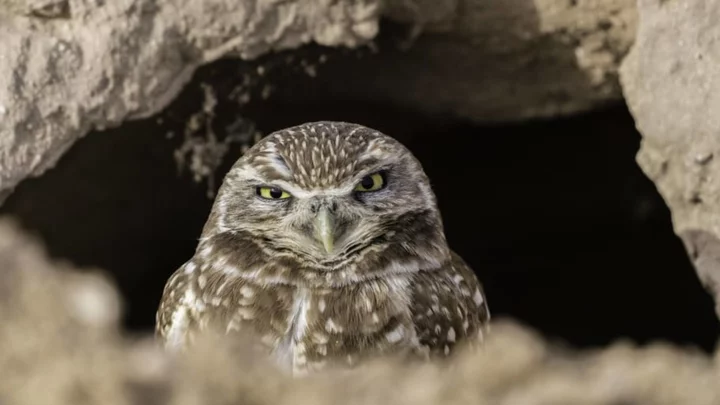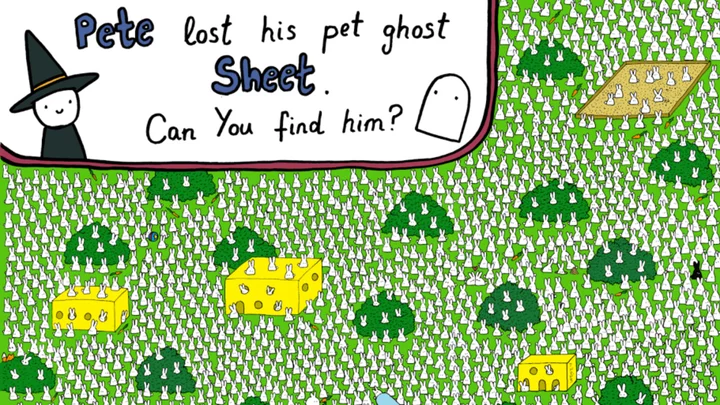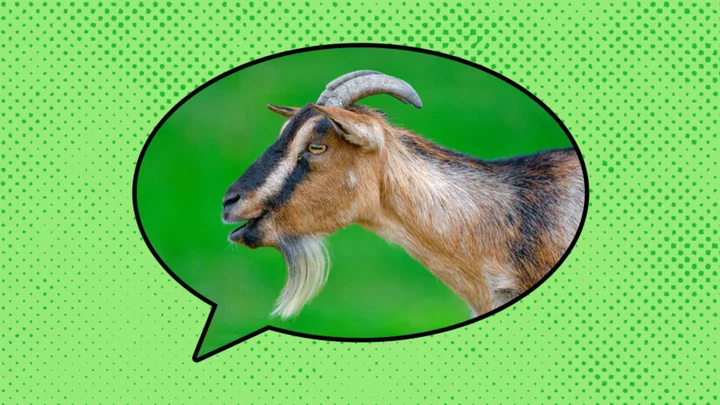Nature is full of beautiful, fascinating, and sometimes strange animals. Often, these creatures are given names that aren’t flowery or clever, but instead have monikers that are unequivocal and to-the-point. Let’s discover 16 amazing animals with delightfully obvious names.
1. Smooth Green Snake
When you hear the name of this common North American snake, you can easily understand what it looks like. The small, thin reptile, which can reach 14–20 inches as an adult, sports a uniform bright green color and smooth, silky-looking scales that don’t have the rigid edges common in other snake species. They camouflage in the meadows, fields, and lawns they inhabit. Though non-venomous and generally docile, this agile snake may bite or secrete a foul-smelling substance from their anal gland if threatened.
2. Big Brown Bat
It’s big. It’s brown. It’s a bat. The big brown bat is one of the most common bat species in North America and can also be found in parts of Central and South America. However, the “big” designation is relative: It’s only large when compared to other bats in the microbat family; it grows to a size of approximately 5 inches. (To put that “big” size into perspective, the giant golden-crowned flying fox can grow to over 5 feet long.) As its name suggests, this species has brown fur that ranges from a reddish-brown color to golden brown. Like other microbats, the big brown bat can see well, primarily feeds on flying insects, and uses echolocation to catch their prey. It’s known to have one of the fastest flying speeds of all bats and can change direction suddenly mid-flight.
3. Burrowing Owl
The burrowing owl’s name reflects its unusual choice of home: underground burrows. One of the smallest owl species, growing up to 9 inches long, they can be found in the grasslands, deserts, and fields of North America and in some drier regions of Central and South America. They’re active hunters during the day (unlike the many other nocturnal owl species) and, to help them hunt in their unique habitat, have evolved disproportionately long legs that allow them to sprint in addition to flying to catch their prey.
4. Miniature Horses
Miniature horses are exactly what their name says they are: tiny horses with a proportional build to that of their larger equine counterparts. Also called “minis,” these diminutive horses originated in Europe in the 1600s, developed by selectively breeding smaller breeds of horses and ponies. In the past, they were put to work in the mines due to their small size, but nowadays they are primarily kept as companion animals. Many owners compete with their miniature horses in performance competitions similar to those for dogs. Miniature horses are also a popular choice for emotional support animals because of their gentle nature.
5. Three-Toed Sloth
Can you guess how many toes a three-toed sloth has on each of its legs? Yes, it’s right there in the name. This species differs from its larger and faster species cousin, the two-toed sloth. Three-toed sloths are the slowest mammals on Earth, only traveling up to 8 feet per minute on the ground, and quickening their pace to just 15 feet per minute while in the trees. The animal’s oversized, curved claws and strong muscles are excellent for keeping a secure grip on the branches of the trees they live in. These tree dwellers only leave the safety of the trees to find a mate or establish a new territory, and also make a weekly descent to the ground to poop.
6. Brown Recluse Spider
Whoever named this spider pinpointed two obvious characteristics—their dominant color and solitary, reclusive nature. Brown recluse spiders prefer to be left alone and are typically not aggressive. They will, however, defend themselves by biting, infecting the victim with a powerful venom that destroys tissue and can cause severe lesions. They’re found in the South and Central U.S. and grow to a size of 0.8 inches. If you need to identify a brown recluse spider, look for the marking that looks like a black or dark brown violin on the dorsal side of its body and check the eyes—they have six eyes instead of eight like most other spiders.
7. Pufferfish
What other name would you give to the fish that, when in danger, fills its stretchy stomach with so much water that it puffs up to two or three times its size? The pufferfish’s name may be obvious because of the sphere-like shape it takes on as a defensive mechanism, but the fish also has pointy spines and carries a deadly toxin called tetrodotoxin—the amount of the toxin from a single animal is enough to kill 30 human adults. There are many different types of pufferfish, living in most tropical, subtropical oceans, and freshwater habitats around the world. All of them can go from graceful slow-moving fish with long tapered bodies, bulbous heads, and large eyes, to ball-like puffy fish in an instant.
8. Leaf-Tailed Gecko
Native to Madagascar, leaf-tailed geckos are masters of disguise that look like part of the tree-filled habitat they live in. The small reptiles are so perfectly camouflaged that any person or predator would have difficulty seeing it. They grow up to 12 inches in size, with long bodies and big marbled eyes. Their tails aren’t just shaped like leaves: they also have veins, varied colorations, and the imperfections of a real leaf. Leaf-tailed geckos also act like leaves hanging from tree branches and can flatten their bodies against tree trunks. It’s a difficult creature to find, but if threatened, the gecko will open its mouth wide and emit a loud distress call that some compare to the scream of a child.
9. Star-Nosed Mole
The star-nosed mole sets itself apart from other moles with the unique, star-shaped nose. The animal can be up to 8 inches long and lives mostly near the waters of forests, wetlands, and marshes of North America. Their noses are ringed with 22 appendages called “rays” that are used to help them find their way around and hunt for prey. With 100,000 nerve fibers, the star-nosed mole’s nose is the most sensitive touch organ of any animal. It’s a good thing, too, because the moles are functionally blind, but with their noses, they can find prey, determine if it’s edible, and eat it in mere seconds (they eat faster than any other animal on Earth). They can even smell underwater by blowing bubbles toward an object and re-inhaling the same bubbles to retrieve the scent.
10. Screaming Hairy Armadillo
The screaming hairy armadillo’s name is an obvious indication of how they differ from other armadillos—they emit a loud scream when threatened (and they’re hairier). The animals have light brown and white hairs that protrude from between the scutes of their armor and cover their limbs and belly. Native to South America’s Monte Desert, the screaming hairy armadillo also has a unique way of burrowing for bugs: They force their head into the sand and turn in a circle to create a cone-shaped hole. The armadillos have also been observed throwing its body onto small snakes, killing the reptile with the edges of their armored shell.
11. Fainting Goat
The fainting goat is also known as the Tennessee fainting goat and the myotonic goat, which describes the muscle-stiffening hereditary condition carried by the breed that leads to their namesake move. When fainting goats are frightened or surprised by something, their bodies freeze, becoming so rigid that the goats fall over. Each fainting episode ends quickly, taking between five to 20 seconds before the animal is back on its feet. The goats are pop culture stars in their own right, featured on the internet and in memes and GIFs around the world.
12. Blue-Ringed Octopus
The blue-ringed octopus is a fascinating little creature to look at. The tiny octopus make their homes in the coral reefs and rocky coastal waters of the Pacific and Indian oceans. But beware! This pretty little blue-ringed beast is among the deadliest of sea creatures, carrying a strong and fast-acting toxin that paralyzes the nerves in its victim. Many people have experienced the pain of its vicious bite. The octopus is known to have caused the death of at least three people: one in Singapore and two in Australia.
13. Red-Eyed Tree Frog
The large red eyes of this aptly named tree frog are a defense mechanism called “startle coloration” that involves revealing patches of color that are kept hidden until an animal feels threatened [PDF]. If the frog is approached, it will open its eyes to momentarily surprise the predator, giving it a valuable few seconds to escape. The Central American frog can be up to 3 inches long, and, in addition to its red eyes, has a bright, lime-green body, vibrant blue legs, and reddish-orange feet.
14. Yellow-Headed Blackbird
Sporting a striking bright yellow head on a dark-feathered body, the yellow-headed blackbird is impressive to look at. They spend summers in wetlands and cattail marshes of Western Canada and the U.S. and migrate to warmer climates in Mexico during the winter. Male yellow-headed blackbirds are said to have one of the most unpleasant calls in the bird world. It has been described as a combination of gurgling, strangling, or honking noises or like the sound of a door swinging on a rusty hinge. In the winter months, yellow-headed blackbirds join up with other blackbirds to form a large group of hundreds or thousands of birds to fly in murmurations; the birds move in an ensemble of rolling and leap-frog patterns, with the back birds seemingly leaping over the front birds.
15. Hammerhead Shark
Someone was inspired by their toolbox when they named the hammerhead shark, which is easily distinguishable from its shark relatives that sport more conical or oblong heads. Hammerhead sharks live in temperate and tropical waters around the world with high concentrations of them near Hawaii, Costa Rica, and Africa. The head is as useful as it is strange: It’s especially good for pinning down stingrays—their preferred meal—and contains a lot of sensory organs that help them hunt. A hammerhead shark’s eyes, at opposite ends of its head, offer it a much wider field of vision than other sharks—a full 360 degrees!
16. Red Flat Bark Beetle
These striking beetles are bright red and live under the bark of dead poplar and ash trees throughout North America. They look as though they might have been smashed into a perfectly proportioned oblong, almost rectangular-shaped body, topped with a triangular head. They’re one of the most cold-tolerant insect species in the world—their larvae can survive temperatures as low as -112°F.
This article was originally published on www.mentalfloss.com as 16 Animals With Delightfully Obvious Names.









